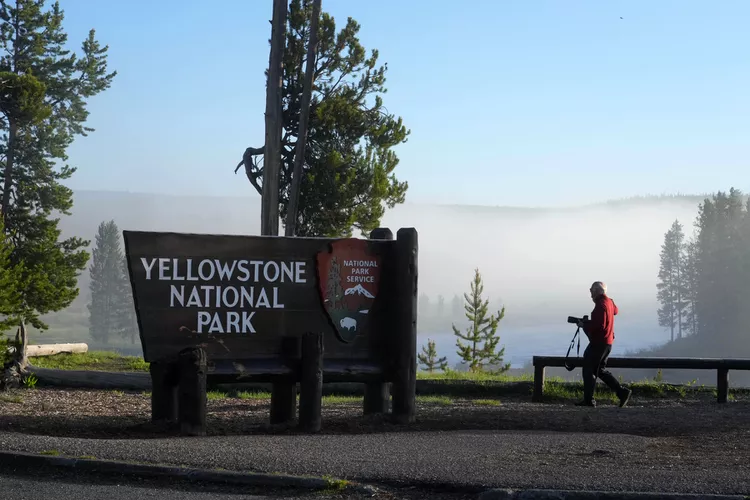Summary
As Yellowstone National Park recovers from June flooding, landslides, and mudslides, access points and open trails have continually shifted. Here’s exactly what you need to know when visiting the park for the rest of the year.
It was set to be a banner year for Yellowstone National Park. In 2021, the park welcomed a record 4.9 million visitors, and in March 2022, the country’s oldest national park celebrated its 150th birthday. However, in mid-June, right as the summer season started to ramp up, record rainfall led to mudslides, rockslides, and flooding, causing damage to roads, water systems, trails, and power lines.
As of Thursday, July 28, the north and northeast entrances remain closed to vehicles due to flood damage. This means visitors looking to access the park by car from Gardiner, Montana, (north entrance) or Cooke City and Silver Gate, Montana, (northeast entrance) are out of luck. That said, the entrances are open to foot traffic.
Although two of the park entrances remain closed, 93% of the park’s roads are open, and both the north and south loops are accessible via the west, south, and east entrances.
America’s oldest national park remains as vibrant and beautiful as ever — it just takes a little extra planning to ensure your trip isn’t impacted by the closures. Here’s what you need to know before you go.
Yellowstone National Park’s South Loop
Access to the south loop was restored on June 22. Travelers can access the loop via the east entrance (Cody, Wyoming), the west entrance (West Yellowstone, Montana), and the south entrance (Grand Teton National Park and Jackson, Wyoming).
Travelers on the south loop can visit some of the park’s biggest sites, including Old Faithful, Norris Geyser Basin, Canyon Village, Yellowstone Lake, West Thumb Geyser Basin, and Grant Village.
The Alternating License Plate System that was implemented when the south loop reopened has been suspended.
Yellowstone National Park’s North Loop
As of July 2, Yellowstone National Park reopened the full north loop. Visitors can access Mammoth Hot Springs, Tower-Roosevelt, Dunraven Pass, and the Obsidian Cliff, among other sites. Like the south loop, the north loop is only accessible via the east, west, and south entrances.
Because the northern part of the park saw the most damage, services remain limited. You can still get gas and certain items at Mammoth Hot Springs and Tower-Roosevelt, but some lodging, restaurants, and campgrounds on the north loop remain closed.
Yellowstone National Park’s Backcountry
Those looking to hike and camp in the backcountry will find many trails and campsites open. That said, some trails near the north entrance (between Gardiner and Mammoth Hot Springs) remain closed, and most of the backcountry in the northeast and eastern part of the park is fully closed.
For an overview of the closures, review the backcountry situation report and the backcountry flood map, which are constantly being updated.
Current Yellowstone National Park Closures
According to a press release updated July 20, 93% of paved roads and 94% of the park’s backcountry is open. In the update, park officials shared that visitors can now park at Tower Junction and bicycle, hike, and fish between Tower Junction and Slough Creek. The road between Tower Junction and Slough Creek is also now open, but only for “commercial tour authorization holders, commercial tour operators, and stock outfitters to provide public access by vehicle.”
Officials are also working on finalizing a day-use reservation system for visitor vehicle access for Tower Junction to Slough Creek, which should be online by August 1, 2022.
In addition to road closures, many of the trails, campsites, and backcountry areas off these roads are closed. However, officials noted in the release, it is now providing limited public day-use access at Slough Creek to approved commercial operators, as well as overnight backcountry permit holders and stock outfitters.
The Old Gardiner Road at North Entrance Road remains closed to general visitors in cars, on bicycles, on foot, and on horseback.
Park officials added, “Reconnecting the park to Gardiner and Cooke City/Silver Gate remains Yellowstone’s highest flood recovery priority,” per the release.
The park is working extremely fast to clear roads, evaluate bridges, and reopen trails and campgrounds. To stay updated on road conditions, visit the park’s live road updates, and for the latest intel on flood recovery work and park operations, see here.





